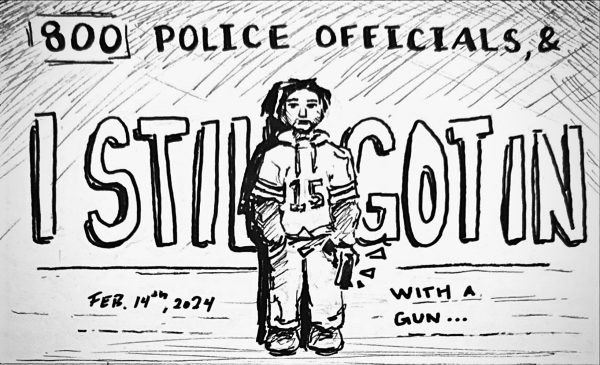Opioid crisis lurks in the shadows
November 8, 2018
The opioid crisis took a backseat in the recent political discussions, but it is a demon that has by no means gone away. More than 115 people in the United States die every day due to overdosing on opioids, and not enough is being done about it.
Opioid misuse and addiction is a serious national concern from a public health and socio-economic standpoint.
Opioids work by attaching themselves to pain receptors in the brain and body and blocking transmissions of pain signals. In the short term, effects include feelings of calm, slowed or stopped breathing, (primarily the cause of death in overdoses,) vomiting and constipation. Long term effects include addiction, heart infection, lung infection and muscle pain. Over time, opioids can rewire the neural structure of the brain and induce addiction.
The data paints a sobering image of medication and narcotics being abused, but even more than that of a healthcare infrastructure that has failed its people miserably. As of this month, overdose is now the top cause of death in people under 50 in the US, according to the Centers for Disease Control and Prevention. In 2017, 11.1 million people aged 12 and older had misused prescription pain relievers in the past year, while in that same year 953,000 people received treatment for opioid misuse. Only 54.9 percent of users aged 12 and older with heroin misuse disorder had received treatment for their addiction at a specialty treatment facility. For opioid abuse, only 28.6 percent of users aged 12 and older with opioid addiction received treatment at a specialty treatment center.
The greatest human toll can be expressed in the deaths around opioids. Opioids were involved in 42,249 deaths in 2016. According to estimates from the CDC, 47,872 people died from opioid overdoses in 2017. Researchers concluded that most of these opioid overdose deaths were unintentional.
The opioid crisis is being driven by three trends: (1) an increase of prescription opioid overdose deaths since 1999; (2) the four-fold increase in heroin overdoses since 2010; and (3) the increased risk and death rate for synthetic opioids like fentanyl since 2013. In fact, the average life expectancy in the United States decreased for the second year in a row in 2016 due to opioid deaths, according to the Surgeon General.
Experts agree that a solution to this opioid crisis will have to be multifaceted. The first would be regulating the corporate sources of these opioids and forcing compliance with drug laws requiring full disclosures to doctors and patients about the dangers. This would close supply chains to pharmaceutical providers that have a history of supplying addicts. Other lawsuits can be filed by local and state governments against pharmaceutical companies, seeking compensation for policing and social welfare costs of loose supply chain security. Various cities and states are already doing this, and the federal government is preparing a lawsuit of its own.
Aside from regulation, the Surgeon General is focusing its efforts on five major principles: improving access to treatment and recovery services, promoting use of overdose-reversing drugs, strengthening our understanding of the epidemic through better public health surveillance, providing support for cutting-edge research on pain and addiction, and advancing better practices for pain management. A key component will be researching recovery processes that will reduce the relapse rate for addicts, lowering the probability they will return to the drug. Some hospitals are trying to equip overdose patients with medications they can take to reduce cravings when they settle back into their routine at home.
Opioid addiction is a staple of American life that has died in the news recently, but it’s still killing Americans. If our government wants to continue a war on drugs, this is it. A failure to act is a failure to our neighbors. Doctors, politicians, the pharmaceutical industry, and citizenry can all play a part in reducing opioid deaths.





